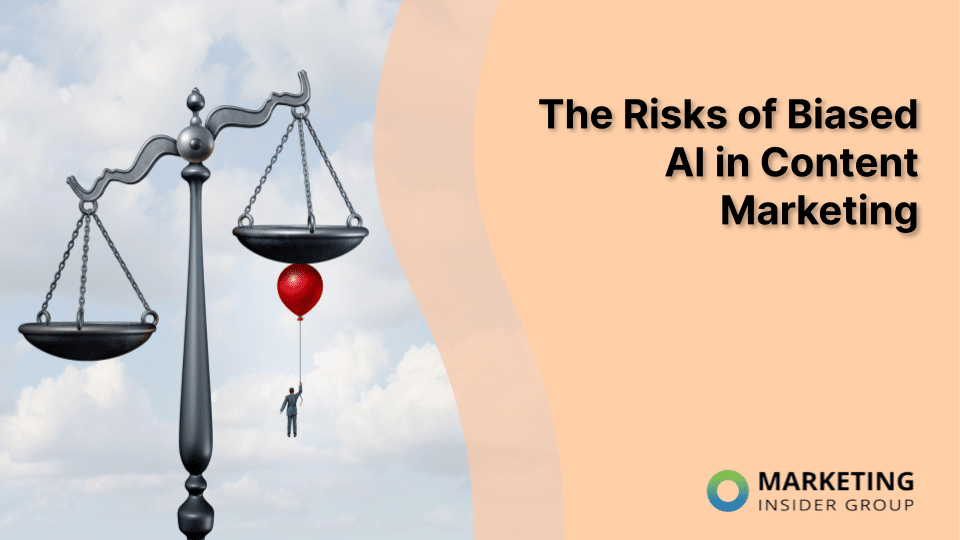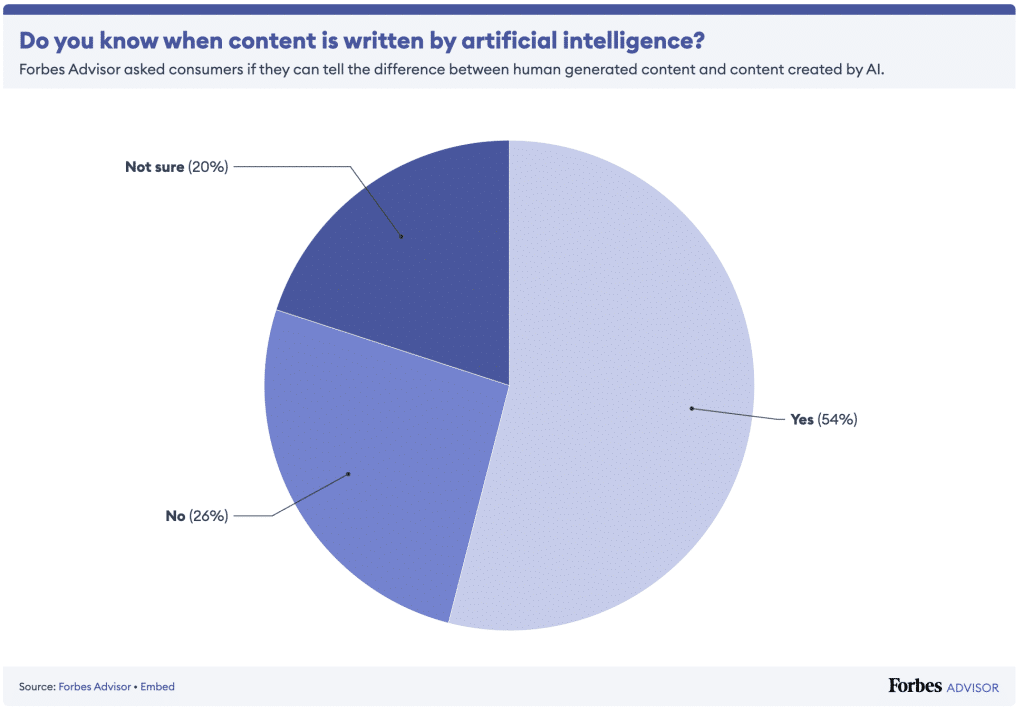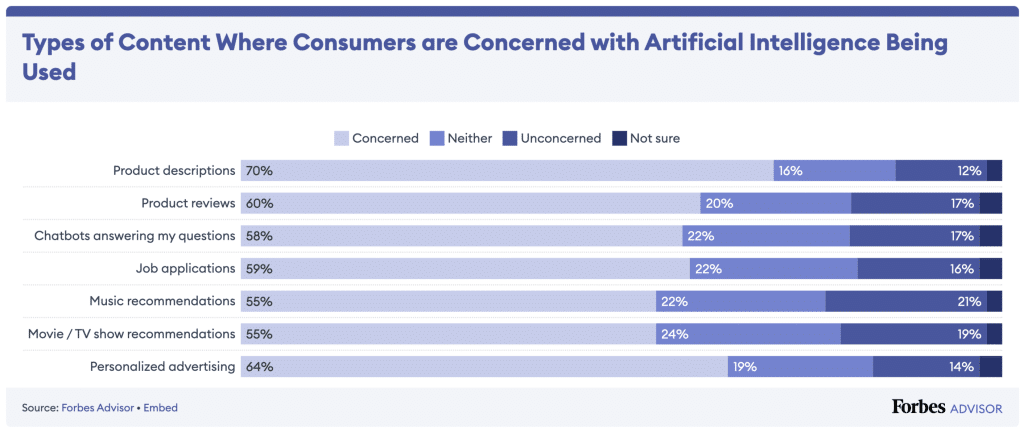
The Risks of Biased AI in Content Marketing
Picture this: You’re scrolling through your favorite blog, and suddenly, the content takes a weird turn. It feels off, maybe even a bit biased. You might think, “What’s going on here?” Well, welcome to the world of biased AI in content marketing.
AI has become the shiny new tool in every marketer’s kit. It’s supposed to make our lives easier, but if we’re not careful, it can also lead to some serious issues. Biased AI can sneak into your content, skewing messages and alienating your audience. It’s like inviting a rogue DJ to your party—everything starts great, but then the music gets weird, and people start leaving.
If you want to keep your readers’ trust, you need to address this head-on. So, let’s explore the risks of biased AI in content marketing and figure out how to keep your content fair and engaging.
Quick Takeaways
- AI bias occurs when AI systems produce unfair results due to wrong assumptions in their training.
- Data bias comes from unrepresentative data, while algorithmic bias is due to flawed algorithms.
- Over 75% of people are concerned about AI spreading false information, but only 54% can tell if content is AI-generated.
- Spotting and fixing AI biases keeps your audience’s trust and protects your brand’s reputation.
Understanding AI Bias
AI bias happens when artificial intelligence systems produce results that are unfair because of wrong assumptions made during their training. This bias can sneak into your content marketing, affecting everything from the tone of your articles to the audience your content reaches.
There are different types of biases to watch out for:
- Data bias occurs when the data used to train an AI model doesn’t represent the whole population. For example, if an AI tool is mostly trained on data from a specific group, it may not work well for other groups.
- Algorithmic bias occurs when the algorithms themselves produce biased results due to how they are designed or how they interpret data.
Understanding AI biases is crucial because it’s the first step to fixing them. Recognizing data and algorithmic biases helps make sure your content stays accurate and inclusive, building trust and maintaining your brand’s reputation.
The Impact of Biased AI on Content Marketing
Biased AI can seriously mess up your content marketing, affecting everything from content quality to audience trust. When AI generates biased content, it can cause several problems:
Content Quality
Biased AI can twist the information in your content, leading to inaccuracies and a lack of different viewpoints. This results in content that is not only misleading, but also doesn’t connect well with a wider audience.
Audience Trust
Trust is the foundation of any successful content marketing strategy. When your audience detects bias in your content, it can erode their trust in your brand. A significant portion of consumers worry that AI spreads false information. This shows how important it is to make sure your AI tools produce fair and accurate content.
Brand Reputation
Biased AI can hurt your brand’s reputation. If your audience thinks your content is biased or unfair, it can lead to negative opinions and less loyalty. In the age of social media, these negative views can spread quickly, causing more damage to your brand.
Engagement and Reach
Biased content can alienate parts of your audience, reducing engagement and limiting your content’s reach. For example, if AI-generated content always favors one group over another, you risk losing the interest of the underrepresented groups. This can lead to a smaller audience and less overall impact.
Identifying Bias in AI Tools
Forbes found that over 75% are concerned about misinformation from artificial intelligence. Yet, only 54% of consumers can tell the difference between human generated content and content created by AI.

Recognizing bias in AI tools is the first step to preventing it from sneaking into your content. When biased AI gets into your content, it can lead to messages that unintentionally offend or exclude parts of your audience. This not only breaks trust, but can also harm your brand’s reputation.
Here are some key signs to watch out for and methods to evaluate your AI tools:
Signs of Bias
- Unrepresentative Content: If your AI tool often produces content that seems to favor one demographic or viewpoint, it could be a sign of data bias. For example, if the content mostly highlights one cultural perspective, it might not be reflecting a diverse audience.
- Repetitive Patterns: Notice if the AI-generated content has repetitive themes or patterns that could indicate a limited or biased dataset. This can lead to a narrow and unbalanced view in your articles.
- Anomalies in Output: If the content includes unusual or unexpected biases, such as gender stereotypes or cultural assumptions, it’s a clear indicator that the AI may have learned from biased data.
Evaluation Techniques
- Diverse Data Sets: Make sure the data used to train your AI is diverse and representative of various demographics and viewpoints. This helps in minimizing data bias.
- Regular Audits: Conduct regular audits of your AI tools and their outputs. Check for any biased patterns or anomalies and adjust the training data or algorithms as needed.
- Human Oversight: Have a team regularly review AI-generated content to catch any biases that the tool might introduce. Human editors can provide the necessary context and judgment that AI lacks.
- Feedback Loop: Implement a feedback loop where users can report biased or problematic content. This real-time feedback can help you quickly address and rectify any issues.
Consumers are increasingly wary of AI applications in business. For instance, 41% are very concerned about AI-generated product descriptions, and 35% worry about personalized advertising. These findings highlight the need for transparency and ethical AI practices to build trust.

Identifying and addressing bias in AI tools is crucial for maintaining the quality and integrity of your content. By keeping your eyes peeled and being proactive, you can make sure your content stays balanced and trustworthy, encouraging greater engagement with your audience.
Strategies to Mitigate AI Bias
Here’s a closer look at effective strategies to tackle AI bias and ensure your content stays in top shape:
- Analyze Your Data Sources: Start by examining where your data comes from. Make sure it’s varied and represents multiple perspectives. This helps prevent any one-sided bias from creeping into your AI’s training.
- Bias Detection Tools: Use specialized tools designed to detect bias in AI models. These can help you spot and fix biased patterns before they affect your content.
- User Testing: Before rolling out AI-generated content, test it with a diverse group of users. Gather their feedback to identify any biases and make necessary adjustments.
- Continuous Learning: Keep your AI models updated with new, diverse data. AI should learn continuously to adapt to changing societal norms and reduce biases over time.
- Cross-Functional Teams: Involve team members from different backgrounds in the AI development process. Their varied perspectives can help identify and correct biases you might overlook.
- Scenario Analysis: Run your AI models through various hypothetical scenarios to see how they perform across different contexts. This helps in spotting any unintended biases and addressing them proactively.
- Transparent Metrics: Use clear metrics to measure AI performance and bias. Regularly share these metrics with your team and stakeholders to maintain accountability and transparency.
By incorporating these strategies, you can significantly reduce AI bias and ensure your content remains reliable and inclusive. This not only enhances content quality but also builds stronger trust with your audience.
Combat Biased AI in Content Marketing Today with MIG
Biased AI in content marketing all comes down to trust. To keep your audience engaged and loyal, you need to actively combat AI bias. By using diverse datasets, auditing regularly, and involving human oversight, you can ensure your content remains accurate and inclusive. Stay vigilant and committed to ethical AI practices to build and maintain trust with your audience.
Ready to effectively combat biased AI in content marketing? We’ve got you covered. Get started today by checking out our weekly blog content service, or schedule a free consultation now to learn more!






